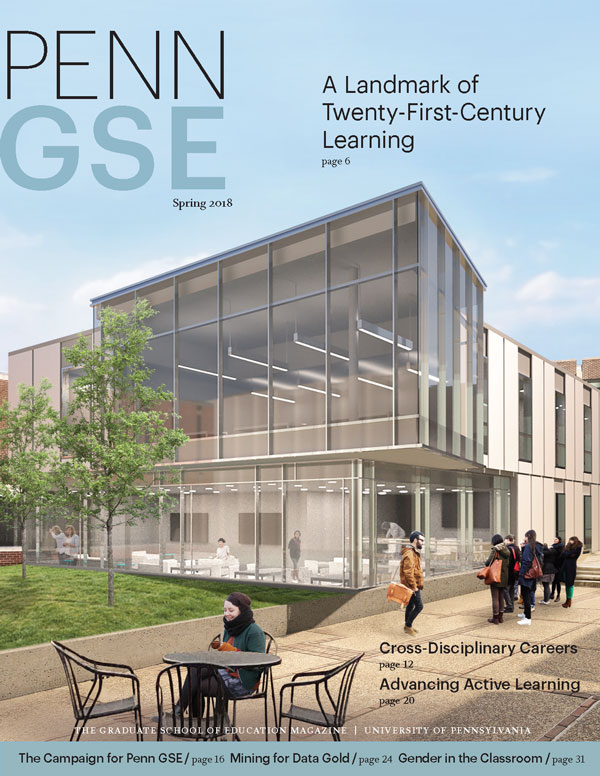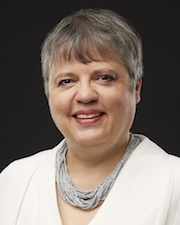Creating Through Electronic Textiles and DNA: Penn GSE’s Dr. Yasmin Kafai Advances Active Learning
by Juliana Rosati
“What kind of activities can be created that are inclusive and will bring in particular groups who have been largely absent from computing?”
At a certain time of year, high schoolers run rather than walk down the hall to Jake Chipps’s computer science classroom in Los Angeles. Upon arriving, they take out an array of colorful fabrics and electronic components. Soon they are deep at work creating stuffed animals, wristbands, hats, laptop sleeves, and other accessories, embedding them with LED lights that glow through circuitry and computer programming.
Such scenes occur during a unit in electronic textiles, or “e-textiles,” developed by Penn GSE’s Dr. Yasmin Kafai, Lori and Michael Milken President’s Distinguished Professor. The unit will be released across the country this summer as a new part of Exploring Computer Science, a curriculum currently used in the nation’s seven largest school districts and adopted by schools in twenty-five states as well as Puerto Rico.
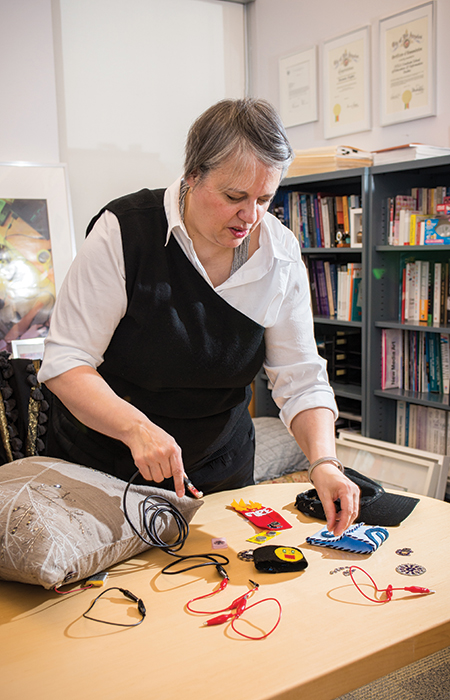
“Students literally are running to class,” reports Chipps. His classroom is part of a pilot led by Dr. Kafai in Los Angeles and Philadelphia with colleagues from the University of California, Los Angeles and the University of Oregon. The project is supported by a $1.19 million grant from the National Science Foundation (NSF). Chipps credits e-textiles with helping to drive a dramatic increase in his classes’ enrollment as well as the participation of girls and students of color. “When students walk around school with the items they’ve made, they catch their classmates’ attention,” says Chipps, chair of his school’s computer science department. “That’s been a huge draw.
Such results reflect the multiple aims of Dr. Kafai’s work—to increase diversity in the field of technology, to strengthen learning by asking students to create, and to take advantage of the social aspects that learning can entail.
“For me, this has always been one of the big questions—what kind of activities can be created that are inclusive and will bring in particular groups who have been largely absent from computing?” Kafai says.
Kafai has spent thirty years at the forefront of computer learning and is world-renowned in the field of learning sciences. Whether she uses e-textiles, video games, or—most recently—synthetic biology to improve learning, the themes of access, creativity, and community distinguish her groundbreaking approaches.
Learning by Making and Interacting
The e-textiles unit has its roots in the beginning of Kafai’s career, when she taught computer programming (also known as coding) by having children design their own video games.
“Early on, kids would say to me, ‘I love to play video games, but can I make my own?’ It struck me as really interesting that kids wanted not only to consume video games, but also to make them,” says Kafai of her inspiration.
One of her earliest books, Minds in Play: Computer Game Design for Children’s Learning (Routledge, 1994), followed students at an inner-city public elementary school as they transformed their classroom into a game design studio for six months. Later, Kafai and her colleagues at the MIT Media Lab developed Scratch, the world’s largest programming community for children. Located at scratch.mit.edu, it also holds the largest collection of games designed by children for children. Participants learn by creating and by receiving their peers’ feedback.
The notion of using creativity and community to fuel learning has its origins in the ideas of the legendary Dr. Seymour Papert, Kafai’s mentor while she was a postdoctoral fellow at MIT. His Constructionist theory states that actively making things in the world is the most effective way for people to build knowledge.
“Creating is a very powerful way of learning because it helps you to externalize your thinking,” explains Kafai. “You create something that is shareable and visible. Your teacher and peers can interact with it, and this gives rise to great conversations.” Papert’s concept and Kafai’s work expanding upon it anticipated two current trends in education—the Learn to Code movement and the Maker movement. The push to teach coding in schools includes ambitious plans by the districts of New York City, San Francisco, and Chicago. Proponents view coding as a way to prepare students for the jobs of the future and equip them with the computational thinking and programming skills to meet the K–12 Computer Science Framework developed in 2016 by a national coalition. The separate but related rise of the Maker movement began outside of education with communities and fairs promoting a “do-it-yourself” spirit in both technology and traditional crafts.
“What’s become popular now is matching up with what Yasmin has been doing all along,” says Debora Lui, GR’16, who works with Kafai as a postdoctoral fellow and wrote her dissertation on the Maker movement.
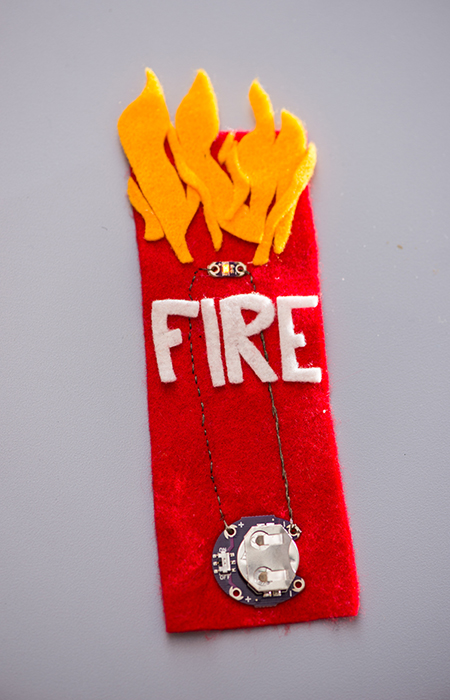
Shedding Light on Technology and Gender
While many schools teach computer programming through robotics, student participation often mirrors the lack of women and minorities in the field of technology at large. Kafai wants to appeal to a broader audience by providing an alternative means to learn the same skills.
The e-textiles unit, currently being piloted by seventeen Los Angeles teachers through the NSF grant, will be published as an optional substitute for robotics in the six-part Exploring Computer Science curriculum. Developed in coordination with a smaller, Philadelphia-based pilot, the unit will give teachers across the country a powerful new tool for engaging students in coding.
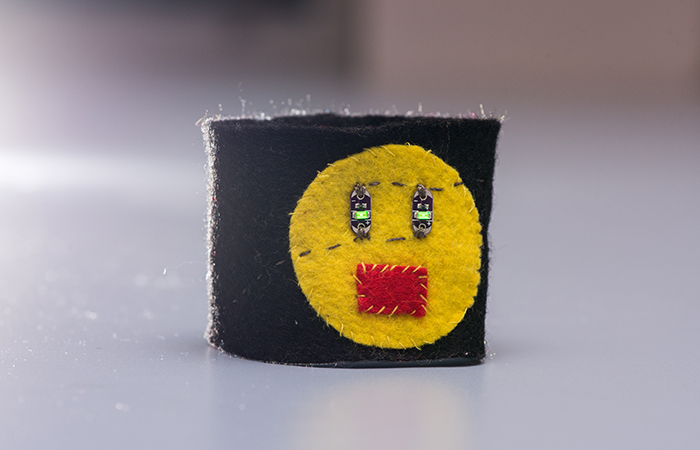
Over the course of three years, Kafai’s team members in both cities have refined the unit. “We look at the effectiveness of the curriculum in terms of what students learn and how they learn— not just computer science concepts, but also how capable they feel of expressing themselves through this medium,” says Dr. Lui, who oversees much of the project in Philadelphia.
Students devise their own projects, sew with conductive thread, and write computer programs for microprocessors (miniature computers) that they attach to their accessories. Some projects incorporate sensors that cause LED lights to activate in response to the moisture of the wearer’s skin. By creating circuits, switches, and computer programs, students learn what is behind the shiny exteriors of most electronic devices—knowledge that can prepare them not only for STEM careers but also for informed citizenship in a world of constant digital communication and data security issues. “Kids need to know that technology is not magic; somebody designed it and made decisions about what to include and exclude,” Kafai says.
Through the combination of electronics and sewing, students gain insight into the workings of both technology and gender stereotypes. “Boys will say, ‘Sewing is a girl’s sport.’ They are the ones, by the way, who are always most proud of their stitching in the end, whereas the girls tend to move more towards the coding,” Kafai observes. She considers addressing stereotypes a critical step toward diversifying the field of technology. “It’s not just a matter of bringing more people into the workforce; it’s also a matter of changing perceptions,” she says.
Designing With Biology
What if students could create by manipulating microorganisms? Extending her work beyond computer science, Kafai is piloting a new curriculum that uses biology as a medium for designing pigments, sensors, and vitamins.
In collaboration with Associate Professor Orkan Telhan of PennDesign and Dr. Karen Hogan from the Department of Biology in the School of Arts and Sciences, Kafai has found an affordable, safe adaptation of professional-grade laboratory techniques in synthetic biology. At the commercial level, synthetic biology produces vitamin-enriched foods and has recently been used to create environmentally sustainable dyes and fabrics.
Using a portable device called the bioMAKERlab, students in Philadelphia schools and the Franklin Institute insert new DNA into microorganisms that they grow to reveal genetically designed traits. If the activity is a success, a pattern “painted” with bacteria in a petri dish emerges in a student’s intended color, bacteria in a bag glow under ultraviolet light after exposure to a sugar or pollutant, or genetically modified yeast enrich a baked cake with beta-carotene.
“Students experience the practical applications of biology and are situated as designers of the process,” says Justice Walker, GEN’12, a Ph.D. student in the Teaching, Learning, and Leadership program at Penn GSE. Formerly a high school biology teacher for eight years, Walker oversees much of the pilot program.
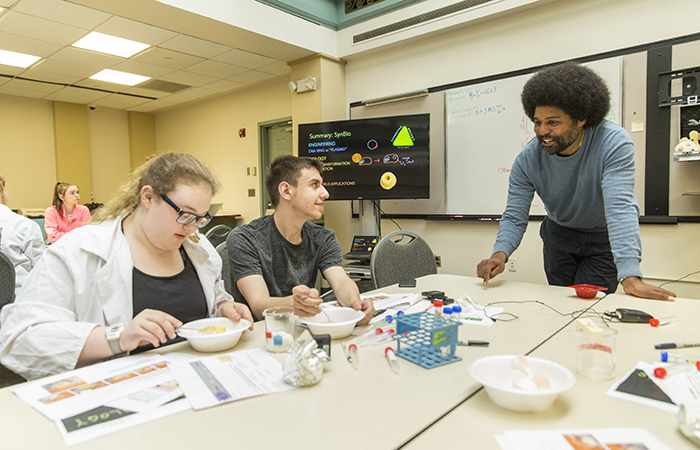
“In some ways the design experience is different than in e-textiles, but I think it is equally rich in learning opportunities,” says Kafai of the project, which is supported by a $300,000 NSF grant and is now in its second year. “In the future, a lot of things in our world will be grown through synthetic biology because it’s just more sustainable.”
Dr. Sheri Hanna, head of a high school STEM department in The School District of Philadelphia, sees that her students have come to understand biology better through the pilot. “We’re not just observing what biology does,” she says. “We’re trying to use what we’ve learned about biology to see if we can manipulate it to do something we want to do. Students could understand more deeply how DNA works by taking it and applying it in a different direction.”
Like the e-textiles unit, the synthetic biology curriculum addresses the issues of access and citizenship. The bioMAKERlab device is designed by Dr. Telhan to be portable and affordable so that schools will be able to use it whether or not they have laboratory facilities, and assignments ask students to consider the potential pros and cons of synthetic biology for the environment and society.
“It’s more than just teaching them to be scientists and hoping for them to be in the STEM pipeline, though we want that,” says Walker. “We’re asking them to be aware of the advances the field is taking because, ultimately, this world will be theirs to live in.”
Looking Ahead
At the 2018 International Conference of the Learning Sciences in London this June, Kafai’s teams will share research demonstrating learning benefits of both the e-textiles and synthetic biology projects. With the support of an additional $1.2 million NSF grant, the e-textiles team has begun another curriculum in collaboration with a colleague at the University of Colorado Boulder, one that will focus on debugging and problem-solving in e-textiles.
Knowing that large-scale implementation of any coding curriculum in K–12 classrooms will depend upon teacher education, Kafai is working to address the nationwide need for teacher preparation in computer science. “In order to really make this accessible, you need widely available teacher education in computer science at state schools and community colleges,” she says. The e-textiles unit to be released this summer contains a professional development component for teachers, and Kafai is a member of an NSF-funded group aiming to lead the national conversation about the pipeline for computer science teachers.
From the vantage point of his classroom in Los Angeles, the benefits of learning by making couldn’t be clearer to Jake Chipps. “I never hear the words ‘easy’ or ‘hard’ or ‘difficult’ in class,” he says. “Students have this thing they are excited to create. It doesn’t matter if it’s a difficult thing to do; they are going to figure out how because they want to do it.”
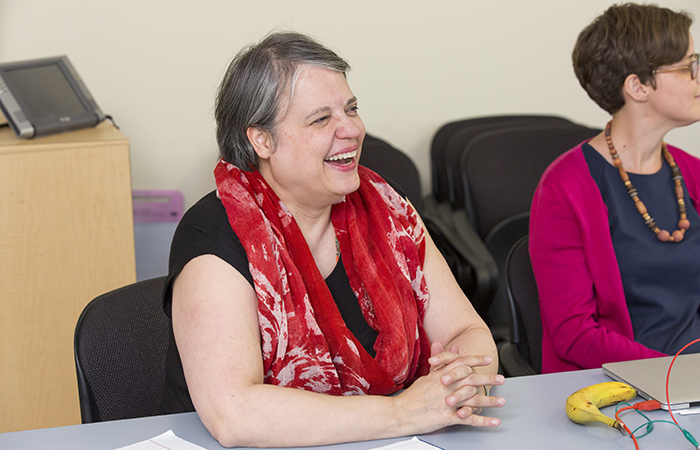
This article originally appeared in the Spring 2018 issue of The Penn GSE Magazine.

